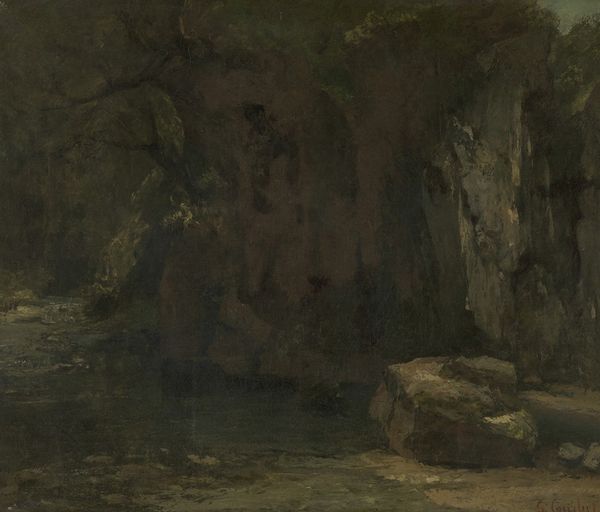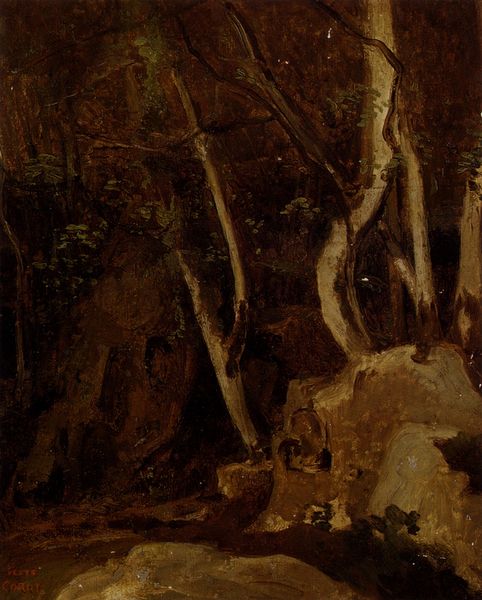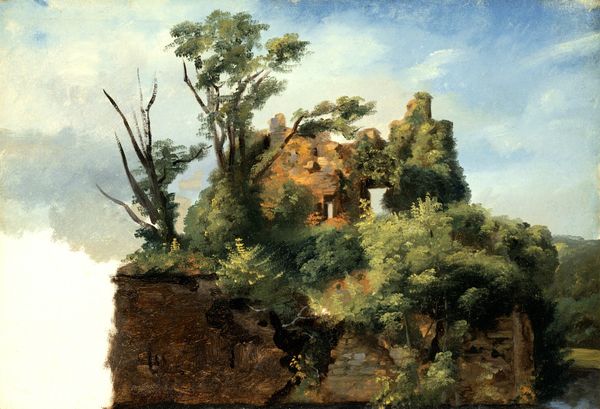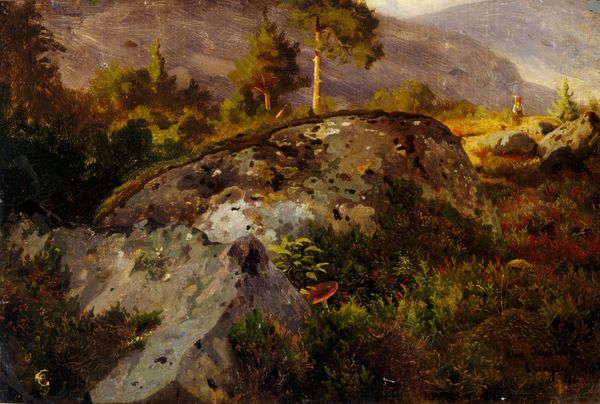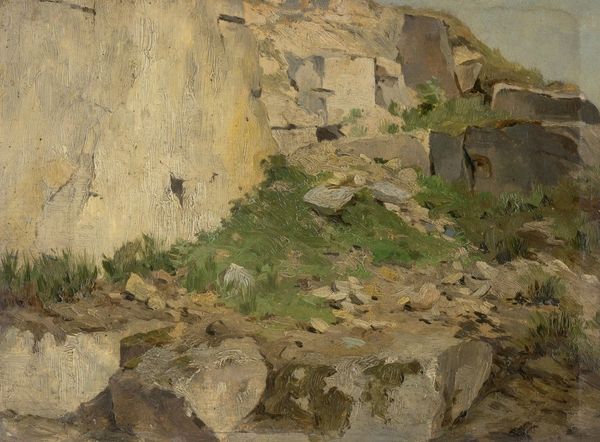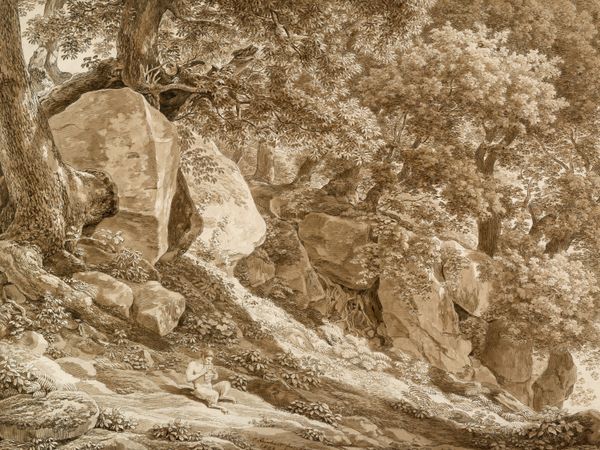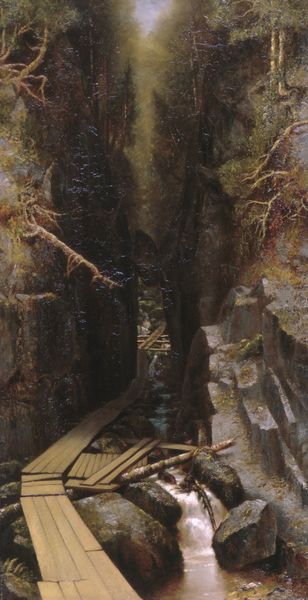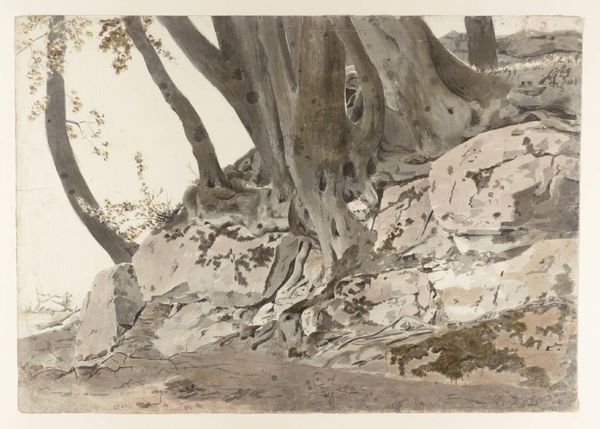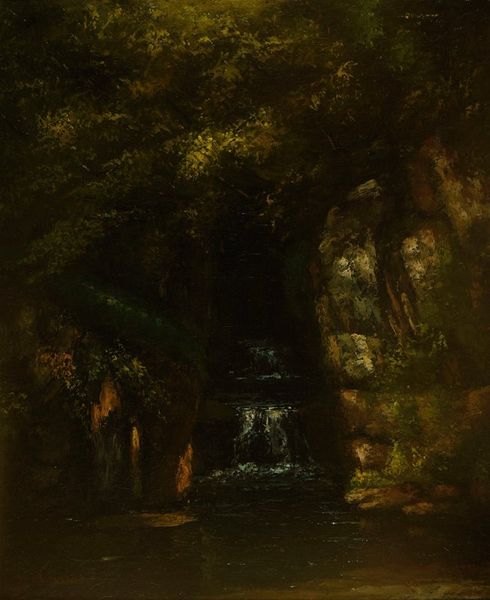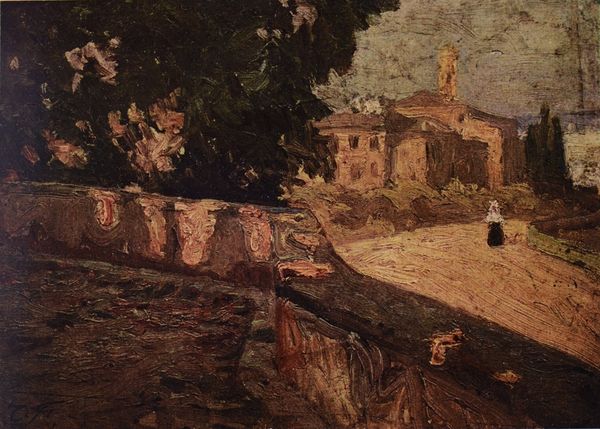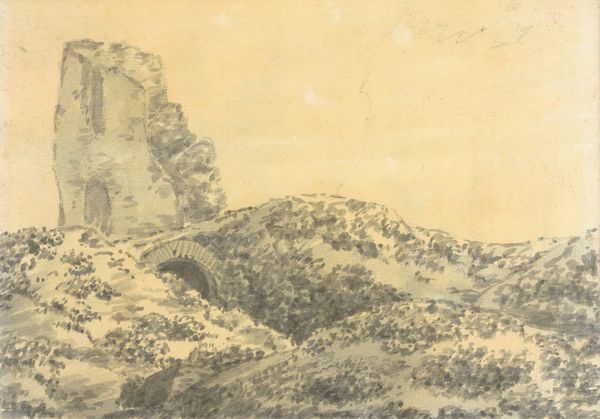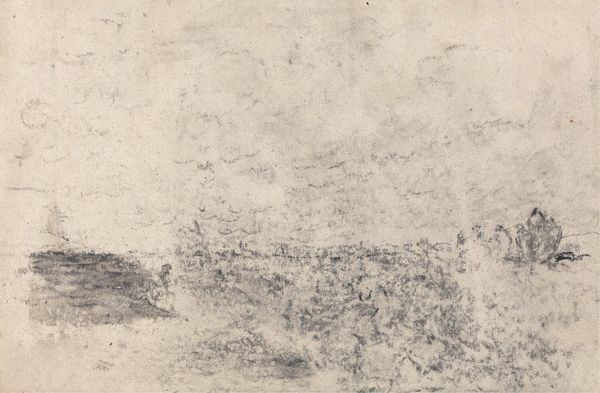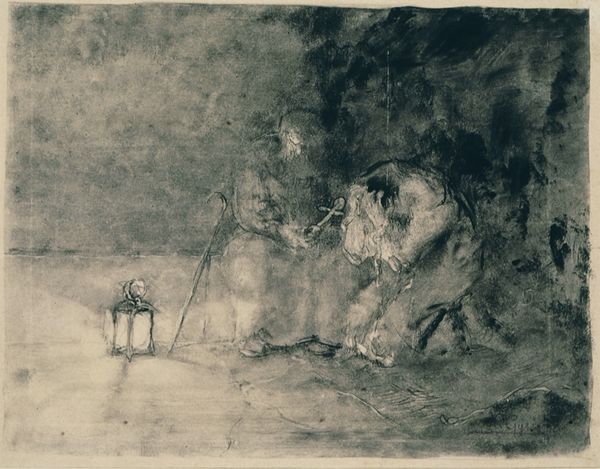
drawing, watercolor
#
drawing
#
landscape
#
charcoal drawing
#
figuration
#
oil painting
#
watercolor
#
romanticism
#
history-painting
#
watercolor
Dimensions: 6 9/16 x 9 in. (16.67 x 22.86 cm) (sheet)
Copyright: Public Domain
George Chinnery created this watercolor painting, *Landscape with Ruins*, during a period marked by European expansion and colonialism. Chinnery, an English artist, spent much of his career in India and China, painting portraits of wealthy merchants and scenes of local life. In this work, we see a crumbling structure with two figures cloaked in white standing in its shadow. Who are these people? Are they witnesses to a bygone era, or perhaps symbols of the artist's own sense of displacement? The ruin becomes a stage for reflecting on themes of power, identity, and cultural exchange. While Chinnery’s art often romanticized the East, it also captured the subtle tensions inherent in cross-cultural encounters. The decaying architecture suggests both the passage of time and the impermanence of human endeavors. It is a poignant reminder of the complexities of our shared histories and the emotional weight of cultural interactions.
Comments
minneapolisinstituteofart almost 2 years ago
⋮
Born in London to a wealthy family, George Chinnery spent most of his life far from home. In 1801 he abandoned his young family and soon set sail for Madras (now Chennai) in India, never returning to England. First in Madras and then in Calcutta (Kolkata), he built a reputation as the best artist in the expatriate community. He gained lucrative portrait commissions, but his finances began to unravel, prompting him to relocate to Macau in southern China, which became his base for the rest of his life. The inhabitants and landscapes of Asia fascinated Chinnery. He made countless drawings of people going about their daily lives. Though we have not been able to identify this ruin, we may surmise that Chinnery found romance in its scale, antiquity, and decay.
Join the conversation
Join millions of artists and users on Artera today and experience the ultimate creative platform.
